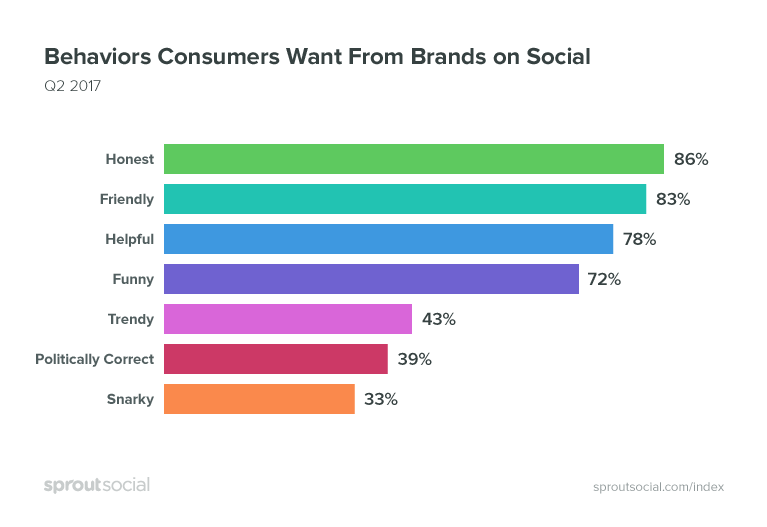

How to Use Social Media to Increase Your Sales
Do you know how to correctly optimize social media to support your eCommerce business? It’s not enough to post a few pics of your product and cross your fingers that people will start buying. You need a plan.
Research shows that 70% of American internet users are on social networking sites — that’s a lot of potential buyers!
We’ve put together some information to help you tap into the vast network of social media users and increase your sales.
Find the Right Social Channel
Not all social media channels are created equal. Some have a larger following of women, some have a smaller population of people over age 55, some are geared toward businesses. Which channel you use depends on which market you want to hit. Here’s a handy list of the most popular channels and their demographics.
Facebook
Facebook is the largest social network with over 214 million US users. It has a fairly even split of male (47%) and female (53%) users and are spread fairly evenly across all income brackets. The largest age demographic is 25-34, but that bracket is only marginally higher than 3 of the other 7 brackets. Overall, if you only have time or budget for one social channel for your business, Facebook is it.
Instagram
Instagram is the place for compelling images, videos and, of course, hashtags. Its users tend to be younger (ages 13-29 make up the largest segment) and more are female than male. Influencers with large followings on Instagram present another avenue for businesses to promote their products. Partnering with influencers to promote your products can quickly take your sales to a new level. More on this later in the blog.
Twitter
Twitter, like Facebook, has about the same number of male and female users. However, the audience is more likely to be from a higher income bracket overall and live in an urban area. 40% of Twitter users are aged 18-29 and are most likely attending or have graduated from college.
LinkedIn
LinkedIn is the #1 social network for Business to Business social media marketing. The majority of LinkedIn’s audience is between 25-34 years of age, and like Twitter, are most likely college graduates.
Pinterest
Pinterest is one network that has a clear division in male/female demographic with more female (80%) than male (20%) users by a wide margin. The largest audience is in the 18-49 age group, although statistics show that the median age is 40. Pinterest is growing as a business platform with the introduction of Rich and Shop The Look Pins.
Create the Best Content
Once you’ve decided which social media channel(s) best fits your business, it’s time to talk content. Users want to connect with your brand, get useful information, and have a little fun. Before you post or share content, think about what purpose it will serve. If you are posting content solely to push your brand, you might come across as too “sales-y” which turns many people off. Good content should educate and entice your audience.
It’s important to post content in your brand voice so that you present a consistent front to the public. The majority of customers respond favorably to honest and friendly brand voices. If your brand voice leans more toward snarky or trendy, that's ok, but proceed with caution. You should think about the demographics of the social channel you are using and modify the content accordingly. If you are using more than one social channel, don’t post the same content on the same day with the same copy. Change things up according to your audience. For instance, at AirTank we post more frequently on Twitter, often retweeting marketing tips and other helpful content. On Instagram, we stick to more visual content like inspirational quotes, dad jokes, or question and answer posts.
Don’t forget about video content. Videos give you space to say more than you would with a normal post. And, as users scroll through their feed, video imagery grabs their attention better than static images, and certainly better than copy alone.
Use the analytics tools provided with each social channel to measure the success of your posts on a weekly or monthly basis. Keep a record of what performed the best and what fell short. This information should be used when creating the next week’s content so you can be sure your efforts are successful.
Promote your Content
In addition to creating ads, there are other ways to get your content in front of people. The most basic of these is to cross-promote on other channels. Make sure you have social icons on your website, newsletters, and emails so that people can quickly find and follow your page. It’s also smart to share user-generated content. Consumers love to buy products that other real (not celebrity) people have endorsed.
Instagram and Facebook both offer shoppable tags for businesses. You connect your product catalog to your business account, tag the products in your posts that are for sale, and users can click and buy right from the post! What could be easier? Pinterest offers similar amenities called Rich Pins and Shop the Look Pins. Rich pins allow you to add more info about your product, including pricing and where to buy. They also allow a user to download your app without leaving Pinterest. Shop the Look Pins operate like the shoppable tags of Facebook and Instagram. Users can click on an image in a fashion or home decor pin and click through to your site to purchase it.
Many businesses have reaped the benefits of collaborating with influencers on Instagram to promote their products. Influencers are people that have established credibility with a large audience on Instagram. You can use the pull, or influence, of an influencer in several ways: by tagging influencers in your posts, mentioning an influencer and linking back to them, asking an influencer to share your post, or working directly with an influencer to promote your product. Your company will be in front of the Influencer’s large audience and will gain brand recognition and, hopefully, a few followers as a result.
Other successful and engaging ways to promote your business are with social-only discounts, contests, and giveaways. Contests can be as simple as captioning a photo, like the one below. Users enjoy playing the game and you create brand awareness and build an engaged following. It’s a win-win situation.
Conclusion
You should now have a solid base on how to use social media to increase sales. It’s important to first pick the right social channel for your business depending on your ideal buyer persona. Then create content that’s relatable and engaging. Finally, promote your content through a combination of ads, shoppable tags, influencers, discounts, contests, and giveaways.
If you are feeling overwhelmed and are not sure how to proceed, contact us. Our experts are ready to help you propel your sales to the next level.
Black Friday & Cyber Monday Insights: Consumer Trends, Spending Habits, and New Marketing Strategies
LET'S TALK ABOUT
YOUR NEXT PROJECT
Choose the service your business needs, or both!




